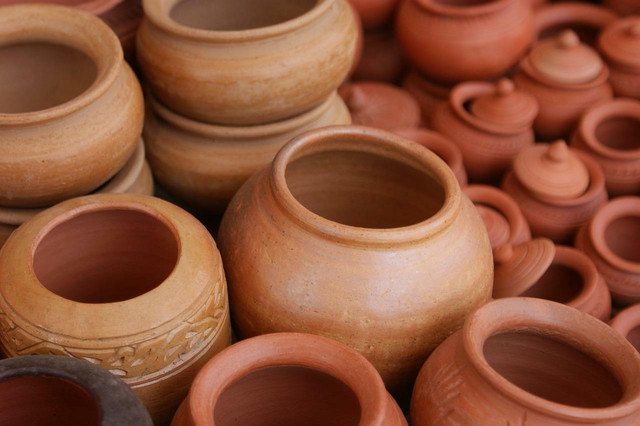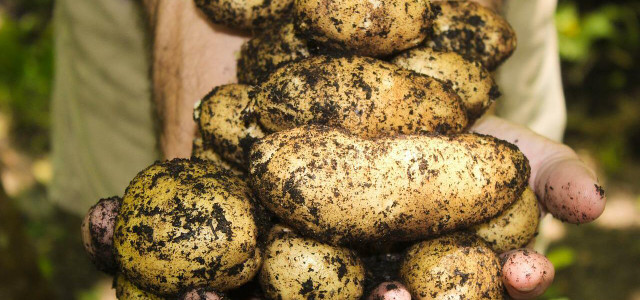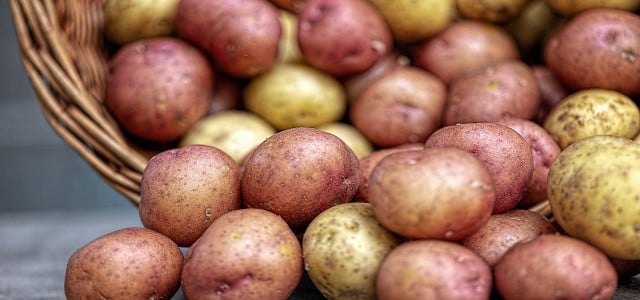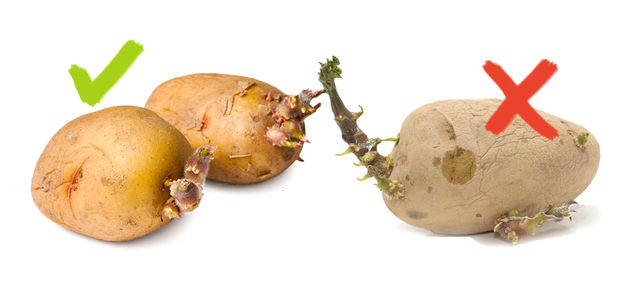Did you know you could grow potatoes in a bucket? It’s a great solution for small spaces that doesn’t require a lot of resources – check out this balcony hack.
Hash browns, french fries, casserole, tater tots – everyone has a favorite potato dish. The good news is that even if you’re living in tight quarters you can grow your own potatoes on your balcony or small yard! All you need is a bright and sunny spot, a bucket, and a few other supplies to start growing your own potatoes.
How to Grow Potatoes in a Bucket



Growing potatoes in a bucket really isn’t difficult, but can be so rewarding. Just follow these instructions:
Supplies
- 2-5 sprouted organic potatoes*: you’ll need two potatoes for a five-gallon bucket, five for a ten-gallon bucket
- large pot with drainage hole or bucket (should hold at least 5 gallons)
- loose, well-draining soil (quality potting soil with compost or nutrients)
- Drill
- Expanded clay
*Some store-bought potatoes are treated with sprout inhibitors, so look for potatoes that have eyes and always wait for them to sprout before you plant them.
Instructions
- Find a good spot for your potato bucket. Potatoes thrive in the sun so make sure the spot gets a lot of it. Keep in mind that some excess water may leak from the bucket, so protect the surface underneath with a drainage plate or something similar.
- If you have to use a plastic bucket, drill 5 drainage holes into the bottom.
- Build a drainage layer using expanded clay – this can help prevent root rotting.
- You’re growing your potatoes in layers: start with a 4-inch layer of soil, then place the potatoes in the bucket with the sprouts facing up. Gently cover with more soil. Soon you’ll see leaves breaking through.
- Once the leaves have grown taller, add more soil, leaving only the top part of the plant exposed.
- Water regularly. Once you see the foliage starting to turn yellow, you can stop watering your plants.
- After another 1-2 weeks, the leaves should have dried up and died. Your potatoes are ready for harvesting! You can either dump the entire bucket or pull out the plants and dig up the remaining potatoes.
Is Growing Your Own Potatoes Sustainable?



Potatoes are a relatively sustainable crop, requiring less water and producing lower levels of greenhouse gas emissions than other crops. Still, by planting your own potatoes, you can make sure that they are organic, non-GMO and avoid additional emissions stemming from transportation. Many crops are heavily treated with pesticides, herbicides, and insecticides, which have numerous negative health effects and harm the environment. Planting them yourself is definitely the more sustainable and safer option.
When it comes to the choosing the most sustainable bucket to grow your potatoes in, there are several things to consider. The best solution is to plant your potatoes in a reusable, plastic-free pot, however this might not be a practical solution for everyone. Depending on where you live, getting a stone or clay pot may not be an option – they can be difficult to find plus they might just be too heavy.
If you have to use a plastic bucket, try to find a used one rather than buying a new one. Just keep away from buckets that used to carry paint and other non-edible/toxic materials. If you don’t have anything like that at home, try your local restaurants to find a leftover food grade plastic container large enough for your potatoes. Make sure you reuse the bucket when you’re planting your next round of potatoes.
Your other options are potato planting sacks (some garden specialty stores carry them) or large rice sacks. To avoid too much moisture building up at the bottom and leaking onto the surface underneath, add a layer of expanded clay or a similar material before filling the sack with soil.
Read more:
- Leftover Mashed Potato Ideas: 3 Delicious Recipes
- Potato Water: 4 Ways to Save and Use It
- Growing Tomatoes in Pots: How to Plant Them on Your Balcony
Do you like this post?








